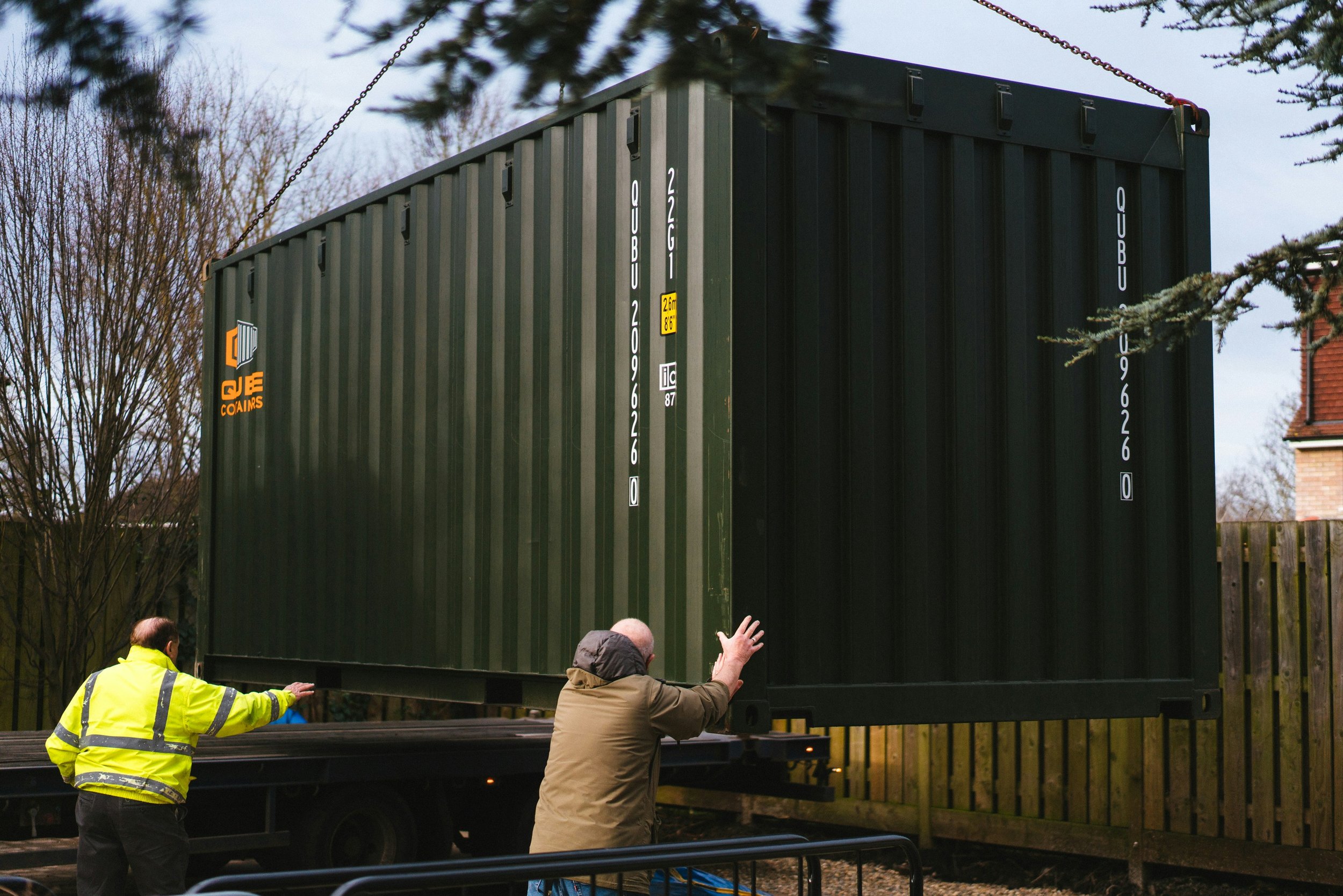DELIVERY GUIDELINES
At Secure Space Containers our goal is to make the purchase and delivery of a shipping container a smooth and safe experience for our customers. We provide professional shipping and delivery service to our customers. Our delivery service includes ground delivery via a tilt-bed truck and trailer (roll-off). Tilt bed trailers are designed to perform secure shipping container delivery with direct placement on the ground at the drop-site. The customer will need to arrange for a side loader or crane if the container needs placed onto a raised foundation. Given that it is impossible to move the container without specialized equipment once it is in place, it is of the utmost importance to ensure that the drop site surface and location are appropriate and adequately prepared.
Our delivery person will inspect the container at the depot to determine the condition of the container is consistent with the grade ordered ie., new, IICL, Cargo-worthy, or wind and water-tight. The delivery person will also check that the doors and locking mechanisms operate smoothly.
Site and Surface Preparations:
The drop site and the delivery surface should be hard or firm as well as level. Drop sites will ideally have an asphalt or concrete space prepared for shipping container drop-off. The weight of the truck and container may be up to 26,000 lbs depending on the size of the container therefore, delivering on a soft, wet, or muddy surface risks damage to the truck and/or container and may pose a risk to our drivers. Unsuitable road surfaces include loose dirt, sand, flooded and muddy areas, sandy, grass areas with soft soil, ice and snow, steep inclines or declines, sloping surfaces, drains, ditches and trenches. If the site is not level the container may flex or bend which may impact the operability of doors and locking mechanisms of the container. Likewise, when placing the container onto the ground the weight of the container needs to be distributed equally onto the four steel corner castings. Blocks, pavers, railroad ties, 4x4 or 6x6 pressure treated timbers may be used for leveling.
The site must also be clear of debris and obstructions such as rocks, tree stumps, low hanging branches and electrical wires and cables.
Width and Height Clearance:
There must be adequate space for delivery and for our truck to maneuver. The trucks may need to make wide turns. Generally, there needs to be a minimum clearance of 14 feet in width for placing and offloading a container. In addition, narrow single lane roads, access roads, drive ways and entrance gates must also be at least 14 feet.
A tilt-bed trailer with a standard container is 14 feet high so to ensure that the delivery process is smooth, it's important to make sure that there is at least 14ft of vertical clearance along the entire route. There needs to be at least 20 feet of vertical clearance at the drop site because the maximum height of a fully tilted trailer with container is approximately 20 feet.
Length Clearance:
Generally, there needs to be a minimum of 120 feet of straight line clearance. Delivery of a 20ft container needs a minimum of 80 linear feet. Delivery of a 40ft container needs a minimum of 120 linear feet. When the container is delivered the delivery truck with tilt-bed trailer is backed into position and tilted up, and the container then rolls off the trailer as the truck pulls forward. It is important to note that trucks cannot make turns when off loading a container i.e., pulling away at an angle, as doing so poses risk of damage to the container.
Door Orientation:
Finally, it’s important to know your preference for door orientation. Our logistics professional will ask whether the container is to be loaded with the doors facing the cab or the rear of the truck. For example, choosing “Doors to the Rear” places the doors at the back of the truck, making them the first to touch the ground when off loading while choosing “Doors to the Cab” places the doors at the front of the truck, making them the last to touch the ground when off loading. This positioning determines the final door placement at the delivery site. It is important to note that the driver will not have the equipment on hand to reorient the container.
Photo by Phil Hearing on Unsplash
Permits:
It is the customers responsibility to obtain any necessary permits or clearances, depending on the regulations in your area. If our driver is unable to secure delivery of your container due to issues related to permits, your container will be returned to the depot. We will refund the purchase price minus a 10% re-stocking fee and any additional fees already incurred.
Delivery Day:
Your delivery driver will call you in advance to confirm everything is ready for delivery. The customer or a trusted contact must be available onsite during delivery. It is preferable to have at least two people present to act as spotters for the driver. In the event of rain, snow or ice, we ask that you contact our logistics specialist for possible rescheduling.
Once your container is off-loaded and in position you will be asked to check the overall condition of the container. Regardless of the specific grade of container you ordered the walls and floors should be free of holes and the doors and locking mechanisms should operate smoothly.
Our driver has the discretion to deny delivery if there is reason to believe doing so poses a risk to the safety of our personnel and/or property when making delivery. If delivery is determined to be too risky our driver may deliver to an alternative site. If there is no viable alternate site the container will be returned to the depot. In this event, we will refund you the purchase price minus a 10% re-stocking fee and any fees already incurred.

Secure Space Containers offers expert
logistics support and delivery service.
Designed by Freepik
